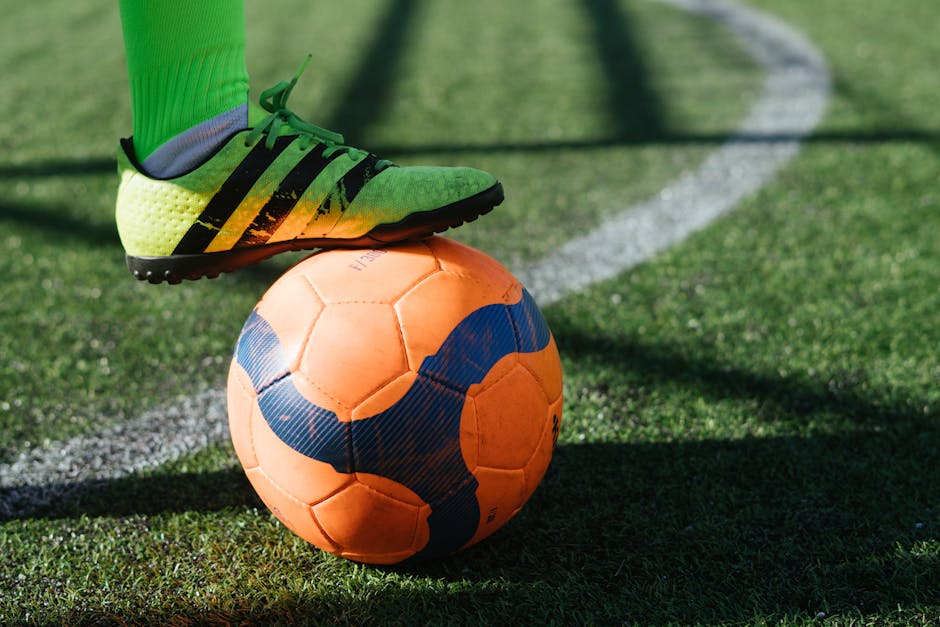Neurofeedback Training: Unleashing Athlete Performance Beyond Limits
Have you ever noticed how some athletes seem to perform under pressure while others falter? The mind plays a crucial role in competitive sports, and thanks to advancements in neurofeedback training, athletes are now unlocking the power of their own brains to enhance performance. By optimizing brainwaves, neurofeedback offers a cutting-edge approach that transcends traditional training methods. Whether you’re an athlete seeking an edge or a coach looking for innovative strategies, understanding the science behind this technique is essential. Dive into the fascinating world of neurofeedback, and discover how it’s changing the landscape of athletic performance.
Understanding Neurofeedback: The Basics

At its core, neurofeedback is a type of biofeedback that focuses on monitoring and training brain activity. By utilizing electroencephalography (EEG), practitioners can observe brainwave patterns in real time. The goal is to help individuals learn how to regulate their brain activity, leading to improved focus, reduced anxiety, and enhanced performance. This approach is particularly appealing to athletes, as achieving peak mental states often differentiates the great from the mediocre.
Research has shown that neurofeedback can help optimize brain function, ultimately leading to improved cognitive processes. For athletes, it can translate to better decision-making on the field, greater concentration during competitions, and even a heightened ability to cope with stress (source: Harvard Business Review). Think of it as a way to train your brain.
The Science Behind Neurofeedback Training

The mechanics of neurofeedback are rooted in neuroscience. Each brainwave frequency correlates with different states of mental activity. Here’s a quick breakdown of the significant brainwaves and their implications for athletes:
-
Delta Waves (0.5 - 4 Hz): Associated with deep sleep and recovery. Athletes need adequate delta wave activity during rest to recover from training and competition.
-
Theta Waves (4 - 8 Hz): Relates to relaxation and creativity. Athletes often tap into theta waves during their warm-ups to achieve a calm, focused state.
-
Alpha Waves (8 - 12 Hz): Linked to relaxed alertness. Aviators and athletes often need this state for optimal performance while under pressure.
-
Beta Waves (12 - 30 Hz): Focused attention and active problem-solving are characterized by beta activity. However, excessive beta waves can lead to anxiety—a common challenge in competitive sports.
Through neurofeedback sessions, athletes learn to enhance desired brainwave patterns while reducing those that may hinder their performance. It becomes a powerful tool for fine-tuning mental states that favor optimal athletic engagement.
Real-World Applications in Sports Training

Numerous professional athletes are turning to neurofeedback training to enhance both their mental acuity and physical performance. For instance, NBA players, NFL quarterbacks, and Olympic hopefuls are integrating these techniques into their training regimens. World-class athletes like Michael Phelps and Serena Williams have largely credited their consistent victories to advanced mental conditioning, hinting that such cognitive training may play a role.
To illustrate the impact of neurofeedback training, let’s look at a few compelling case studies:
-
The Golfing Mindset: A study involving golfers used neurofeedback training to help players improve their focus during crucial putting situations. The results demonstrated that participants who underwent such training consistently achieved lower strokes than those who didn’t.
-
Combat Sports: Fighters in mixed martial arts have also turned to neurofeedback to improve their mental clarity and emotional control in the ring. By learning to regulate their brainwave patterns, they find themselves better equipped to remain composed during bouts, increasing their chances of victory.
-
Team Sports: Coaches are leveraging neurofeedback to build mentally resilient teams. Athletes engaging in team-based sports such as football or soccer benefit from enhanced harmony between individual performance and collective dynamics, which can lead to winning seasons.
The Intersection of Neurofeedback and Other Training Modalities

Neurofeedback isn’t a standalone solution. It seamlessly integrates with other modalities athletes use, such as strength training, nutrition, and recovery methods. For example, alongside cognitive strategies might be physical training techniques—like those discussed in articles about gut health and its influence on sports performance. When included as part of a holistic regimen, neurofeedback yields even more substantial benefits, allowing athletes to fine-tune their physical prowess while maintaining mental equilibrium.
Moreover, neurofeedback can play a crucial role when combined with mental techniques like visualization. Many athletes employ visualization to mentally rehearse successfully executing skills ahead of competitions. Neurofeedback can strengthen these visualizations by creating a neurological landscape that's primed for peak performance.
The Debate: Skepticism and Criticism

Despite its potential benefits, neurofeedback training has faced its share of skepticism. Critics argue that more extensive, peer-reviewed studies are necessary to validate its effectiveness substantively. The science of neurofeedback has advanced in recent years, but questions remain regarding its long-term impacts on athletic performance.
For example, while many anecdotal reports highlight substantial successes, scientific literature provides mixed findings. A critical analysis from Nature Reviews Neuroscience suggested that while neurofeedback can lead to brain optimization, teaching athletes to self-regulate brain activity isn't always straightforward.
Yet, as more athletes and coaches turn to this innovative training modality, ongoing research is required to explore its potential to reshape athletic performance definitively.
Training and Personalization: Tailoring Neurofeedback Programs

One of the vital aspects of neurofeedback training is personalization. No two athletes are the same; different sports demand various mental skills. A neurofeedback program designed for a precision sport, like archery, may look vastly different from one aimed at a high-intensity sport, like football.
Professional neurofeedback trainers often design bespoke programs tailored to an athlete’s needs. This personalized approach includes assessing baseline brainwave patterns and adjusting training to target areas for improvement. Athletes can be trained to raise certain brainwave frequencies while suppressing others, ensuring they consistently find the ideal mental state needed for their specific competition.
The Future of Neurofeedback in Athletic Training

As we look forward, neurofeedback training is positioned at the forefront of athletic development. Its potential applications into virtual reality (VR) and artificial intelligence (AI) open new frontiers. Imagine athletes training in VR environments while receiving real-time neurofeedback to optimize their focus and decision-making processes. This fusion of technology and cognitive training could revolutionize how athletes prepare for competition.
Community and Collaboration: The Role of Team Psychologists

Team psychologists have increasingly recognized the significance of incorporating neurofeedback into their practices. The collaborative relationship between neurofeedback trainers and psychologists is invaluable for fostering a deep understanding of athletes' mental health and emotional well-being. This multi-disciplinary approach creates a comprehensive support network that promotes overall athlete development.
Furthermore, in exploring the psychological aspects of rivalry and competition, as discussed in our article on the psychology of rivalry, it becomes evident that enhancing mental resilience through neurofeedback can be a powerful ally. Teams fostering healthy rivalry dynamics can leverage neurofeedback strategies to minimize anxiety and foster a strong performing culture.
Final Thoughts: Harnessing the Mind for Peak Performance
Neurofeedback training represents a burgeoning frontier in sports performance enhancement, offering athletes an innovative tool to refine their mental game. By tapping into the brain's potential, athletes can break through cognitive barriers that may be holding them back.
As we continue to explore the interplay of technology and mental conditioning, neurofeedback stands out as a beacon of possibility. The landscape of sports training will likely evolve as more athletes recognize the significance of mental mastery alongside physical prowess. This dual approach of marrying neurofeedback with other performance strategies can make for a formidable training philosophy that puts athletes ahead of the game.
Ready to explore the exciting avenue of neurofeedback training? Stay ahead of the curve and unlock your potential!



